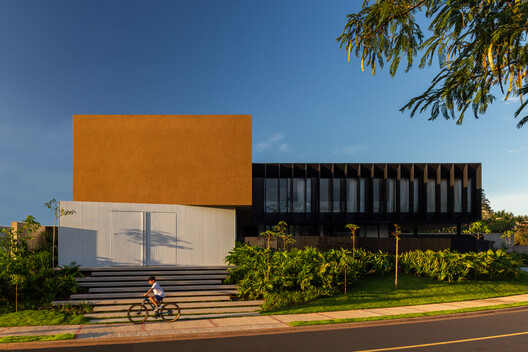Continental divide: Smaller Western European cities are better for your health
Over three-quarters of Europeans live in cities, but their quality of life varies wildly — especially when it comes to factors that have a big impact on health.
A group of international researchers developed a new Healthy Urban Design Index (HUDI) to track and assess well-being in 917 European cities, using indicators ranging from access to sustainable public transport and green spaces to air pollution exposure and heat islands.
The tracking tool was developed by the Barcelona Institute for Global Health using data gathered for a study to be published in this month’s Lancet Planetary Health journal. According to its findings there is a clear continental divide in conditions that favor healthy urban living.
Analyses reviewed by POLITICO’s Living Cities showed that municipalities in Western Europe — especially in the U.K., Spain and Sweden — received significantly higher scores than comparable cities in Eastern European countries like Romania, Bulgaria and Poland.
Natalie Mueller, one of the study’s authors and a researcher at the Barcelona Institute for Global Health and Pompeu Fabra University, said access to public funds plays a major role in this divide. “If there are financial constraints in cities, investing in sustainable and health-promoting urban forms and infrastructures, and defining environmental policies may be probably less of a priority than tackling other more pressing social and economic issues,” she said.
Mueller also noted lingering cultural differences in environmental consciousness and the link between urban design and health. “Eastern European cities still have a strong car culture, where cars are still status symbols,” she said, adding that in some areas, active mobility options like cycling are frowned upon. “They still strongly cater to car traffic with necessary infrastructure, which leads to poor environmental quality and worse health outcomes.”
By comparison, lower levels of air pollution, greater access to green spaces, and the reduced presence of urban heat islands enabled Europe’s smaller cities, with 50,000 to 200,000 inhabitants, to earn the highest HUDI scores.
Topping the list is Pamplona — a regional capital in Spain that lies in a lush valley at the foot of the Pyrenees and that has used the considerable revenues from its annual “Running of the Bulls” festival to invest in active mobility infrastructure.
Madrid makes good
Earning the highest score among Europe’s urban areas with more than 1.5 million inhabitants was Madrid, another Spanish city. Like other big cities it ranked well on sustainable transport and housing density.
However, Madrid’s placement was remarkable given that the Spanish capital routinely violated the EU’s air quality rules until 2023. Urbanism Councilor Borja Carabante told POLITICO this was precisely why the city had adopted aggressive measures to improve its expansive public transport system.
“We’re the first EU capital to have a completely clean urban bus system,” he said, highlighting the number of electric or zero-emissions mass transport vehicles in the network. “We also have Europe’s largest low-emissions zone.”
Carabante explained that the public transport initiatives accompanied subsidies for residents seeking to replace their cars or boilers with more sustainable models, or wanting to install e-charging stations in their buildings.

Madrid is also taking on major infrastructure projects while building on the success of the Madrid Río regeneration project, which buried a major swathe of the capital’s ring road to recover the Manzanares River. Work is currently underway on a scheme to redirect a major highway underground and to reconnect five neighborhoods that have been divided since 1968. The redeveloped 3-kilometer area will be a green axis with trees, playgrounds and space for pedestrians and cyclists.
Carabante said the project is emblematic of the city’s commitment to becoming a more desirable — and healthier — place to live.
“While cities like Berlin, Rome, Paris and London continue to surpass the nitrogen-dioxide levels considered safe for humans, Madrid has drastically reduced it, complying with European standards, and has become a healthier, more pleasant and more sustainable city than ever before.”
Citing examples from the study, Mueller emphasized there are plenty of low-cost measures that local authorities can implement to improve well-being within their municipalities.
“You can open up streets and blocks to give people space to walk and cycle, as they’ve done in Barcelona’s superblocks, in London’s low-traffic neighborhoods or Berlin’s Kiezblocks,” she said. The researcher also recommended replacing parking spots with trees and other greenery to protect locals from deadly heat, or to prioritize public transport investments to boost connectivity and slash fares.
Using the example of Amsterdam — which went from being a car-choked, smoggy port city in the 1970s to a global model for urban well-being — Mueller stressed that consistent long-term action is the key to making Europe’s cities healthier.
Of course, the kind of measures that improve well-being in urban landscapes can be a challenge for municipal leaders, who are up for reelection every four years and are under pressure to prefer projects with immediate results. But Mueller urged them to think big.
“Building healthier urban infrastructure needs long-term, sustained investments,” she said. “Sometimes over many decades.”




















:quality(85):upscale()/2025/09/09/891/n/1922283/7222624268c08ccba1c9a3.01436482_.png)
:quality(85):upscale()/2023/10/03/668/n/1922283/1f15c8a9651c2d209e5eb5.32783075_.jpg)
:quality(85):upscale()/2025/08/14/650/n/1922283/470aeb83689df49cdc1bb6.14084110_.jpg)
:quality(85):upscale()/2025/08/13/775/n/1922283/3c0cbead689ccd0c422644.10221678_.png)
:quality(85):upscale()/2025/01/08/844/n/1922398/cde2aeac677eceef03f2d1.00424146_.jpg)













:quality(85):upscale()/2025/07/10/708/n/1922398/8fe2782e686fe372b38bf8.29984296_.jpg)

